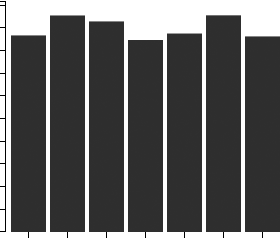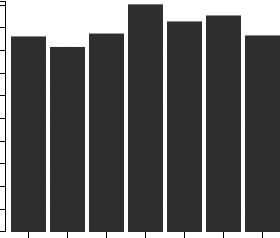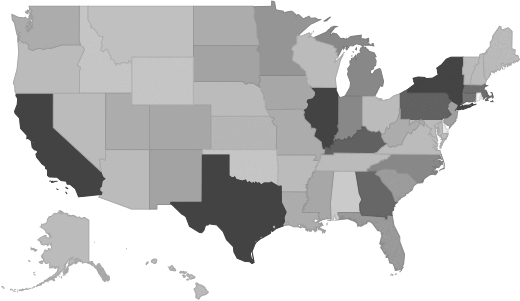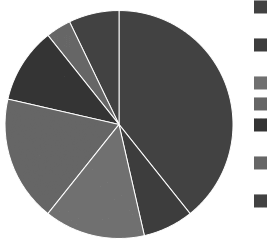Geophysical Surveying & Mapping Services Industry - Market Research Report
Industry Overview
This industry comprises establishments primarily engaged in gathering, interpreting, and mapping geophysical data. Establishments in this industry often specialize in locating and measuring the extent of subsurface resources, such as oil, gas, and minerals, but they may also conduct surveys for engineering purposes. Establishments in this industry use a variety of surveying techniques depending on the purpose of the survey, including magnetic surveys, gravity surveys, seismic surveys, or electrical and electromagnetic surveys.
Source: U.S. Census BureauMarket Size and Industry Forecast
This research report analyzes the market size and trends in the Geophysical Surveying and Mapping Services industry. It shows overall market size from 2020 to the present, and predicts industry growth through 2030. Revenues data include both public and private companies.
| Historical | Forecasted |
|---|
| 2020 | 2021 | 2022 | 2023 | 2024 | 2025 | 2026 | 2027 | 2028 | 2029 | 2030 |
|---|
| Market Size (Total Revenue) | Included in Report |
| % Growth Rate |
| Number of Companies |
| Total Employees |
| Average Revenue per Company |
| Average Employees per Company |
Source: U.S. government financial dataIndustry Revenue ($ Billions)

Industry Forecast ($ Billions)

Advanced econometric models forecast five years of industry growth based on short- and long-term trend analysis. Market size includes revenue generated from all products and services sold within the industry.
Geographic Breakdown by U.S. State
Market size by state reveals local opportunity through the number of companies located in the region. Each state's growth rate is affected by regional economic conditions. Data by state can be used to pinpoint profitable and nonprofitable locations for Geophysical Surveying & Mapping Services companies in the United States.
Geophysical Surveying & Mapping Services Revenue by State

Distribution by Company Size
| Company Size | All Industries | Geophysical Surveying & Mapping Services |
|---|
| Small Business (< 5 Employees) | Included |
| Small Business (5 - 20) |
| Midsized Business (20 - 100) |
| Large Business (100 - 500) |
| Enterprise (> 500) |
Geophysical Surveying & Mapping Services Industry Income Statement (Average Financial Metrics)
Financial statement analysis determines averages for the following industry forces:
- Cost of goods sold
- Compensation of officers
- Salaries and wages
- Employee benefit programs
- Rent paid
- Advertising and marketing budgets
The report includes a traditional income statement from an "average" company (both public and private companies are included).
| Industry Average | Percent of Sales |
|---|
| Total Revenue | Included |
| Operating Revenue |
| Cost of Goods Sold (COGS) |
| Gross Profit |
| Operating Expenses |
| Operating Income |
| Non-Operating Income |
| Earnings Before Interest and Taxes (EBIT) |
| Interest Expense |
| Earnings Before Taxes |
| Income Tax |
| Net Profit |
Average Income Statement

Cost of Goods Sold
Salaries, Wages, and Benefits
Rent
Advertising
Depreciation and Amortization
Officer Compensation
Net Income
Financial Ratio Analysis
Financial ratios allow a company's performance to be compared against that of its peers.
| Financial Ratio | Industry Average |
|---|
| Profitability Ratios | Included |
| Profit Margin |
| ROE |
| ROA |
| Liquidity Ratios |
| Current Ratio |
| Quick Ratio |
| Activity Ratios |
| Average Collection Period |
| Asset Turnover Ratio |
| Receivables Turnover Ratio |
| Inventory Conversion Ratio |
Products and Services Mix
Product lines and services in the Geophysical Surveying & Mapping Services industry accounting for the largest revenue sources.
| Product Description | Description | Revenue
($ Millions) |
|---|
| Industry total | Included |
| Geophysical data collection |
| Geophysical data acquired by seismic methods |
| Geophysical data sales |
| Integrated geophysical services |
| Acq & processing geophysical data - land-based seismic methods |
| Acquiring, processing, & interpreting geophysical data |
| Geophysical data processing |
| Geophysical data acquired by non-seismic methods |
| Geophysical consulting services, including expert witness services |
Salary information for employees working in the Geophysical Surveying & Mapping Services industry.
| Title | Percent of Workforce | Bottom Quartile | Average (Median) Salary | Upper Quartile |
|---|
| Management Occupations | 9% | Included |
| Chief Executives | 0% |
| General and Operations Managers | 3% |
| Business and Financial Operations Occupations | 6% |
| Computer and Mathematical Occupations | 6% |
| Computer Occupations | 5% |
| Architecture and Engineering Occupations | 50% |
| Architects, Surveyors, and Cartographers | 10% |
| Architects, Except Naval | 7% |
| Architects, Except Landscape and Naval | 6% |
| Engineers | 25% |
| Civil Engineers | 11% |
| Civil Engineers | 11% |
| Drafters, Engineering Technicians, and Mapping Technicians | 15% |
| Drafters | 7% |
| Architectural and Civil Drafters | 5% |
| Engineering Technicians, Except Drafters | 6% |
| Life, Physical, and Social Science Occupations | 5% |
| Office and Administrative Support Occupations | 11% |
Government Contracts
The federal government spent an annual total of
$83,300,459 on the geophysical surveying & mapping services industry. It has awarded 368 contracts to 125 companies, with an average value of $666,404 per company.
Top Companies in Geophysical Surveying & Mapping Services and Adjacent Industries
| Company | Address | Revenue
($ Millions) |
|---|
Included |



